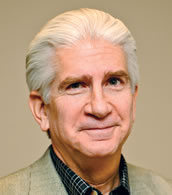Successful Treatment for
Pilonidal Cysts
Steven C. Immerman, MD
General & Thoracic Surgery
Evergreen Surgical
Eau Claire
What is a Pilonidal Cyst?
A pilonidal cyst is a pocket of infection that occurs in the skin over the tailbone area. These infections begin as enlarged pores in the crease between the buttocks. Hair can enter these pores, burrow their way underneath, and cause infection under the skin. Sometimes this causes minor irritation (like an ingrown hair), but other times it can cause a painful infection that requires surgical treatment. Different patients have varying amounts of pain and infection from this problem. Once pilonidal infections begin, they may continue to cause problems unless surgically treated. For the patient, especially a young adult, they can be embarrassing, and interfere with social and physical activities.
“I have practiced in Eau Claire for over 30 years at Evergreen Surgical. I became frustrated with
the high rate of recurrence (re-operation) with patients
suffering from pilonidal cysts, and searched for a
better solution. I have adopted a procedure that has a high success rate and is easier for my
patients compared to the standard procedure.”
 What is the Standard Surgical Treatment?
What is the Standard Surgical Treatment?
Treatment of pilonidal infection can be a challenging and frustrating experience for both the patient and the physician. Surgeons are taught to remove all the visible infected areas and either attempt to close the wound (which often fails), or leave the wound open to heal over several months. This can lead to some patients having to deal with open wounds that require dressings and wound care for months or years. The biggest mistake is that the standard surgical treatments fail to correct the cause of the infection: a deep buttock crease. Remaining moist at almost all times, a deep crease promotes growth of bacteria, and creates negative pressure which sucks hairs into enlarged pores. Any procedure that does not address the depth of the buttock crease has a high failure rate. Unfortunately, many surgeons in the United States and Canada were only taught procedures that do not adjust the depth. Because of this, it is common to see recurrent infections requiring multiple operations.
Pilonidal Cyst Excision with Cleft Closure/Cleft Lift
The procedure that I perform attempts to flatten the cleft (crease), and place the stitches off-center so they can heal quickly. Over 90% of my patients require only one procedure to rectify this problem. No open wounds with complicated dressing care are ever needed. In less than 10% (particularly in patients who have already had multiple previous operations or a very deep cleft), two procedures may be necessary. The procedure may address a long-standing problem, but is done in under an hour’s time as an outpatient, and healing is rapid once the cleft problem is repaired and re-configured. After the operation, the buttock crease will be slightly flatter. This usually heals in a couple of weeks without any open wounds, packing or special wound care.
If you know someone who has struggled with this problem, encourage them to call our office. We are happy to see out of town patients one day, and schedule surgery the following day so they may return home quickly.
Steven Immerman, M.D., FACS is the senior partner at Evergreen Surgical, a board certified general surgeon, and a Fellow of the American College of Surgeons. Due to his high success rate with pilonidal cyst excision with cleft closure/lift, he takes care of patients throughout the Midwest, and as far away as Canada.
Dr. Immerman – Evergreen Surgical
For information or to schedule an appointment:
715-832-1044 | www.evergreensurgical.com
Dr. Immerman sees patients in Eau Claire.



 What is the Standard Surgical Treatment?
What is the Standard Surgical Treatment?